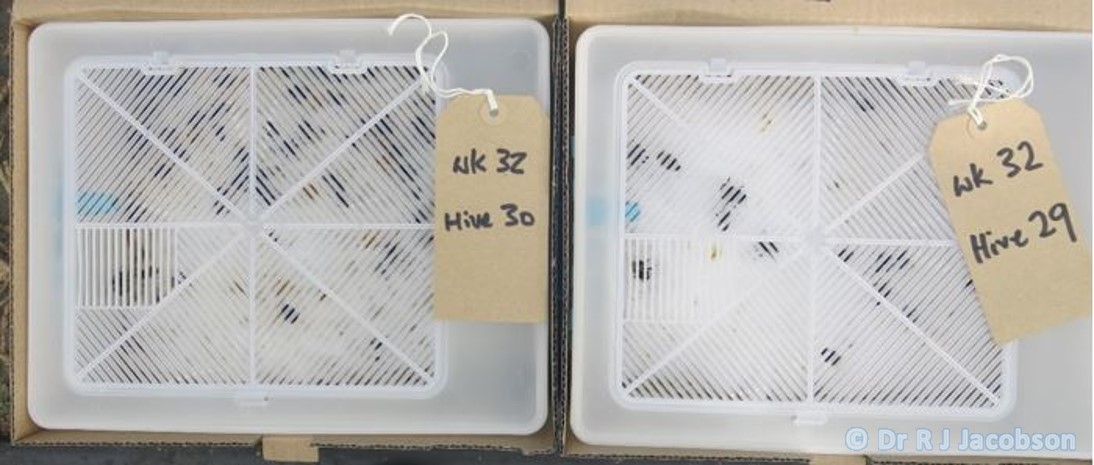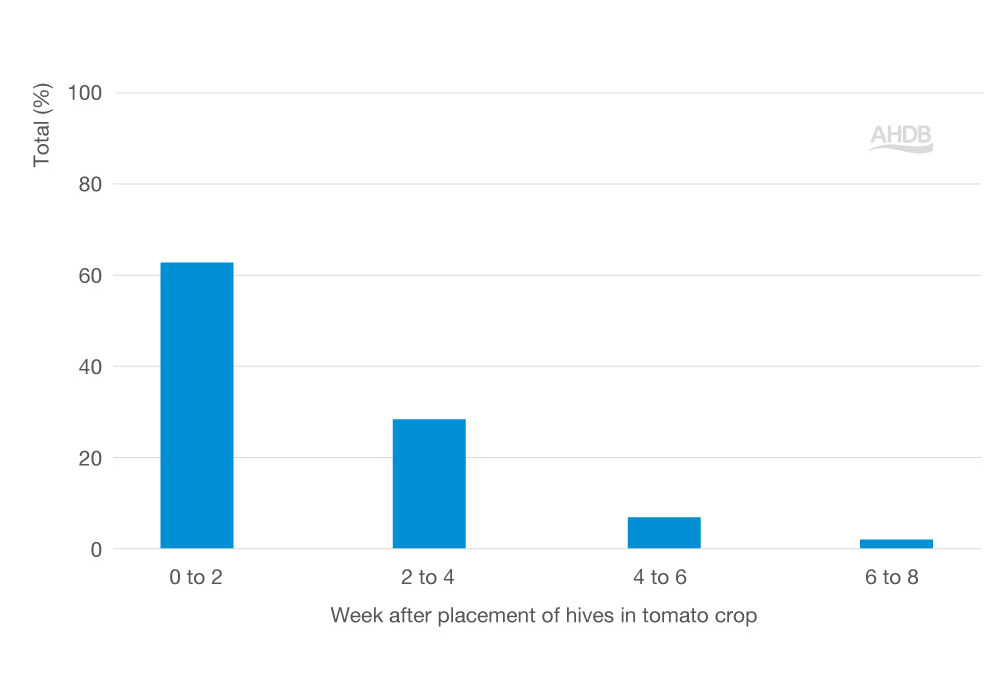Please click here to access the main AHDB website and other sectors.
- Home
- Knowledge library
- Bombus terrestris colony development in tomato crops
Bombus terrestris colony development in tomato crops
Read about the colony development of the Bombus terrestris bumblebee.
Typical ‘trend’ in the life of a Btt/Btd colony
In the early 1990s, when the commercial use of bumblebees in tomato crops was still in its infancy, the three production companies devoted considerable resource to monitoring Btt/Btd colony development in their clients’ glasshouses. Their results were commercially sensitive and weren’t published. However, it is possible to provide an insight into the findings of one of the producers, Bunting Brinkman Bumblebees BV (Griffiths, pers. com. 1992; Jacobson, unpublished data 1990–1993).
Figure 1 shows a typical ‘trend’ in the life of a Btt/Btd colony, from its initiation in the bumblebee production unit to its demise in the commercial crop. The colonies began with a single queen producing a small batch of about eight eggs which she raised to become infertile workers. After that, she focused on producing eggs while the workers took over all foraging and brood maintenance tasks. The colony rapidly grew in size and would be transferred to the tomato crop about 12 weeks from initiation with 50–60 workers present. The workers then foraged among the tomato plants, and the colony continued to grow for a further 6–8 weeks. At around that point, fertile males and females emerged, leaving the hive to mate with adults from other colonies. This marked the end of the cycle, and the colony rapidly declined.

Figure 1. Typical ‘trend’ in the life of a Btt/Btd colony, from its initiation in the bumblebee production unit to its demise in the commercial crop
(NB: This diagram illustrates an overall trend, but the actual numbers of adult bees present were inherently variable and should not be quoted from this diagram).
Investigation into Bta colony life in UK tomato crops during 2018
Twelve growers participated in the investigation into Bta colony life in their tomato crops. This provided a spread of locations throughout the main tomato growing areas in the UK, as well as different bumblebee suppliers and types of tomatoes.
The growers followed an agreed protocol to collectively monitor 161 hives with a total of 777 individual colony assessments. An estimate was made of the number of adult bees in the hive and the colony was assigned to one of the following indices (Figure 2):
- Index 1 = 1–15 adult bees in view
- Index 2 = 16–30 adult bees in view
- Index 3 = over 31 adult bees in view

Figure 2. Examples of colonies assigned to index 1 (right) and index 3 (left). © Dr R J Jacobson.
There were variations in numbers of adult bumblebees in hives upon delivery from all suppliers but this was also known to be the case with the non-native bumblebees. Sixty-two per cent of the Bta colonies declined within two weeks of being placed in a tomato crop, which increased to 90% within four weeks of delivery (Figure 3).
The Bta hives generally contained good active colonies upon delivery, and we would have expected these to continue to increase in size before completing their cycle. The rapid decline was in contrast to our expectations based on previous studies with the non-native bumblebees.
There were no consistent differences between bumblebee supplier, geographical location or tomato type. The only two common factors across all the sites appeared to be Bta bumblebees and tomato crops; thus suggesting that the former either do not function optimally in the tomato growing environment or the plants do not provide them with a satisfactory food source.
These results began to explain why more Bta hives are required than was the case with Btt/Btd and why some growers have obtained improved results by moving to a weekly hive input schedule.

Figure 3. The time after delivery that 161 Bta colonies, across 12 UK tomato production sites, went into decline after delivery to those sites
More detailed study of Bta colonies from UK tomato crops during 2019
In the colony duration studies in 2018, numbers of live adult bees were estimated in active colonies. In these studies, a range of hives of different ages from different sites, crops and suppliers were frozen before being broken down to record precise numbers of all life cycle stages.
There was considerable variation in the numbers of all Bta life stages in the colonies regardless of the origin, age and/or history of those colonies. The average numbers of adults and brood per hive remained relatively small, and the development pattern over time was quite level. This was broadly consistent with our observations in 2018 and, once again, in contrast with our expectations based on Btt/Btd colonies.
Hives were also collected from an outside habitat at Wellesbourne, where the bees had access to a range of natural pollen sources. These colonies contained substantially more adult bees and brood than those from the glasshouses, and colony development did follow the pattern to which we had previously been accustomed with Btt/Btd.
Once again, these combined results suggest that Bta either do not function optimally in the tomato growing environment or the plants do not provide a satisfactory food source.
Useful links
Got a question? Ask a member of the team
Author
The content on this page was authored for AHDB by Dr Rob Jacobson (Rob Jacobson Consultancy Ltd).

